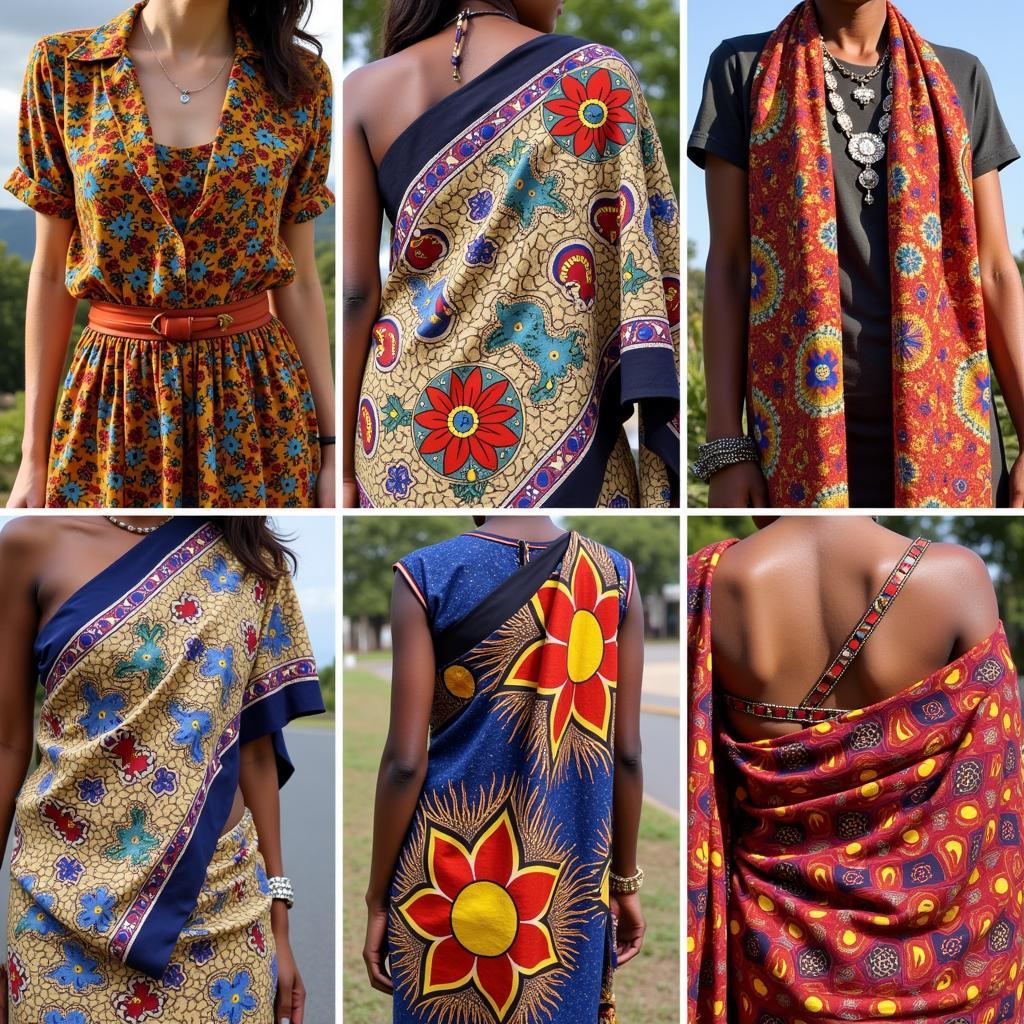African Indian Dressing: A Tapestry of Cultures and Styles
The term “African Indian Dressing” encompasses a fascinating blend of influences, reflecting the long and complex relationship between Africa and India. From vibrant fabrics and intricate embroidery to unique silhouettes and symbolic motifs, this fusion of styles speaks volumes about shared histories, cultural exchange, and individual expression.
A Historical Interweaving of Threads
The story of African Indian dressing begins centuries ago, with trade routes crisscrossing the Indian Ocean. As merchants exchanged spices, textiles, and ideas, so too did cultures intertwine. Indian fabrics, known for their rich colors and intricate patterns, quickly gained popularity on the African continent.
In particular, the arrival of Indian indentured laborers in parts of Africa during the colonial era further enriched this sartorial fusion. Women brought with them their traditional garments like the sari, which found new life and interpretations in their adopted homelands. These garments were often adapted to suit local climates and customs, resulting in unique hybrid styles.
The Sari’s African Evolution: From Durban to Dakar
Perhaps the most iconic example of African Indian dressing is the evolution of the sari. In South Africa, particularly among the Indian communities of Durban, the sari evolved into the “Durban sari.” This variation often features bolder colors, heavier embellishments, and a distinct draping style reflecting a blend of Indian and Zulu aesthetics.
 Durban Sari Variations
Durban Sari Variations
Similarly, in West African countries like Senegal and Nigeria, the sari has been incorporated into local fashion, often worn with a matching headwrap and styled to complement traditional West African silhouettes. This adaptation exemplifies the beauty of cultural exchange, where garments transcend geographical boundaries and become canvases for personal expression.
Beyond the Sari: A Fusion of Fabrics, Colors, and Motifs
While the sari holds a prominent place in African Indian dressing, the interplay of cultures extends far beyond a single garment. Indian fabrics like silk, chiffon, and cotton, known for their vibrant hues and intricate embroidery, are often incorporated into traditional African clothing styles.
For instance, in East Africa, the “kanga,” a rectangular piece of fabric with Swahili proverbs, often features intricate patterns and borders inspired by Indian designs. Similarly, in West Africa, the “buba,” a flowing tunic worn by women, might be crafted from vibrantly colored Indian silks or adorned with intricate embroidery inspired by Indian motifs.
African Indian Dressing Today: A Celebration of Identity
In contemporary Africa, African Indian dressing continues to evolve, reflecting a dynamic blend of tradition and modernity. Designers are increasingly drawing inspiration from this rich sartorial heritage, creating clothing that celebrates both African and Indian aesthetics.
From high-fashion runways to everyday streetwear, this unique fusion of styles serves as a powerful reminder of the enduring legacy of cultural exchange and the beauty of diversity. African Indian dressing is not just about clothing; it’s about celebrating identity, heritage, and the power of cultural fusion.
Frequently Asked Questions about African Indian Dressing
1. What makes African Indian dressing unique?
African Indian dressing stands out for its fusion of vibrant colors, intricate embroidery, and the adaptation of traditional garments like the sari to suit diverse African aesthetics and cultural contexts.
2. Where can I find contemporary African Indian fashion?
Many talented designers across Africa and the diaspora are creating stunning pieces that blend African and Indian elements. You can find their work showcased at fashion weeks, online boutiques, and specialty stores.
3. Is African Indian dressing only limited to women’s wear?
While women’s wear often takes center stage, African Indian dressing also influences menswear. From the use of Indian-inspired fabrics in tailored suits to the fusion of traditional motifs in casual wear, the influence is evident across genders.
4. How does African Indian dressing reflect cultural exchange?
This unique style is a testament to the long-standing trade and cultural connections between Africa and India. It exemplifies how garments can transcend geographical boundaries and evolve into new expressions of identity.
5. What is the future of African Indian dressing?
As designers continue to explore this rich sartorial fusion, we can expect to see even more innovative and exciting interpretations of African Indian dressing, further blurring the lines between cultures and celebrating the beauty of diversity.
Discover More about African Cultures and Connections
Interested in learning more about the intersections of African and Indian cultures? Explore these related articles:
- African Indian Mobility Fund
- 150 Years of Celebrating the Mahatma: The South African Legacy
- African Cumminity in India
For any assistance, please contact us at +255768904061, email us at kaka.mag@gmail.com, or visit us at Mbarali DC Mawindi, Kangaga, Tanzania. Our customer service team is available 24/7 to assist you.

